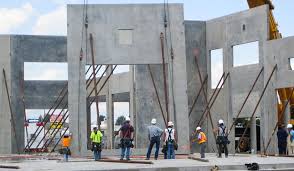 When monitoring and responding to the Contractor’s schedule performance on the project, how do you know if the schedule update is even valid for use?
When monitoring and responding to the Contractor’s schedule performance on the project, how do you know if the schedule update is even valid for use?
When we review a schedule progress update, we need to first determine if the schedule update is a valid update. By that, I mean is the logic still complete? Have there been any revisions with this update that result in the schedule not meeting the contract requirements or best practices? It doesn’t take much to render a schedule useless….
There are most likely logic revisions, changes to lag values, or possible changes to calendars or assignments. There are also deletions and additions of activities and/or Activity Relationships. Then there are changes to quantities or Resources which may impact Activity Durations or Resource Calendars.
For this post, we will address changes to Relationship Lags.
Personally, the first schedule “quality check” I make is for complete logic. Please see the previous post, Schedule Performance Measurement, Part 2. (For Owners).
One of the things that are really hard to check, using Primavera P6, is changes to Activity Relationship Lags.
Often, when the Contractor is making schedule revisions to recover lost time for the update period, they make subtle changes to logic. They also make changes to the Relationship Lag values assigned to specific Activity Relationships. If they have modeled the sequence of work using SS Relationships with Lags, they may reduce the Lag value for an activity, driven by the Activity Relationship with the Lag, to gain a day or so. If there is an FS Relationship with a Lag, they may reduce that lag value as well.
They can also change the Relationship Lag’s effect by changing the Activity Calendar of the Activity selected to determine the Relationship Lag’s behavior.
None of this is easy to check in Primavera P6 and is not readily transparent in a Gantt Chart.
Most of us use third-party software designed to identify changes to Relationships and Relationship Lags. That’s great, but we still need to understand the impact of the changes identified.
Changes to Relationship Lag values does not make the schedule invalid for use. But, the owner needs to know what changes were made and what effect the changes have on the affected Logic Path. Some specifications prohibit the use of Relationship Lags. Many specifications allow limited use and do not allow the use of negative Lags at all. I prefer to minimize the use of Lags and do not like to use Negative Lags. There are conditions which warrant the use of a Negative Lag, but the condition has to be monitored and other options for modeling the work sequence should be exhausted.
That said, finding the changes to Relationship Lags, understanding the impact of the changes found, and reporting those findings is important to the Owner.
As Planning and Schedule Professionals, we need to provide the Project Team with the “tools” they need to manage the project. The owner needs to know what the performance of the actual work in the field is, compared to the planned performance. Unless we have a valid schedule update to measure with, and against, and understand the impact of acceptable schedule revisions, we cannot provide an accurate measurement.
I’m sure many of you have comments or additional insight into this subject. Please share!
I’d love to hear what you think!
Please visit https://conschmanservices.com to learn more about Construction and Schedule Management Services, LLC
Please visit my LinkedIn account to learn more about me.
Please visit my “The Blue Book” ProView.
Paul Epperson CCM, PMP, PSP, PMI-SP
 Do you ever look at a schedule and wonder why a series of related activities will have different Total Float values? Perhaps the activities on the Critical (Longest) Path?
Do you ever look at a schedule and wonder why a series of related activities will have different Total Float values? Perhaps the activities on the Critical (Longest) Path? Do you regularly use Start-to-Start SS relationships? Perhaps you add a lag to drive the start of the successor out a few days?
Do you regularly use Start-to-Start SS relationships? Perhaps you add a lag to drive the start of the successor out a few days? You have a
You have a  You have created your project’s
You have created your project’s  You are working with a construction scheduling consultant and they use terms you’ve heard before, but you’re not 100% sure you really understand what they mean. More importantly, you’re not sure how they affect the schedule.
You are working with a construction scheduling consultant and they use terms you’ve heard before, but you’re not 100% sure you really understand what they mean. More importantly, you’re not sure how they affect the schedule.